Dr. Yan Zhang 张焱
Assistant Professor
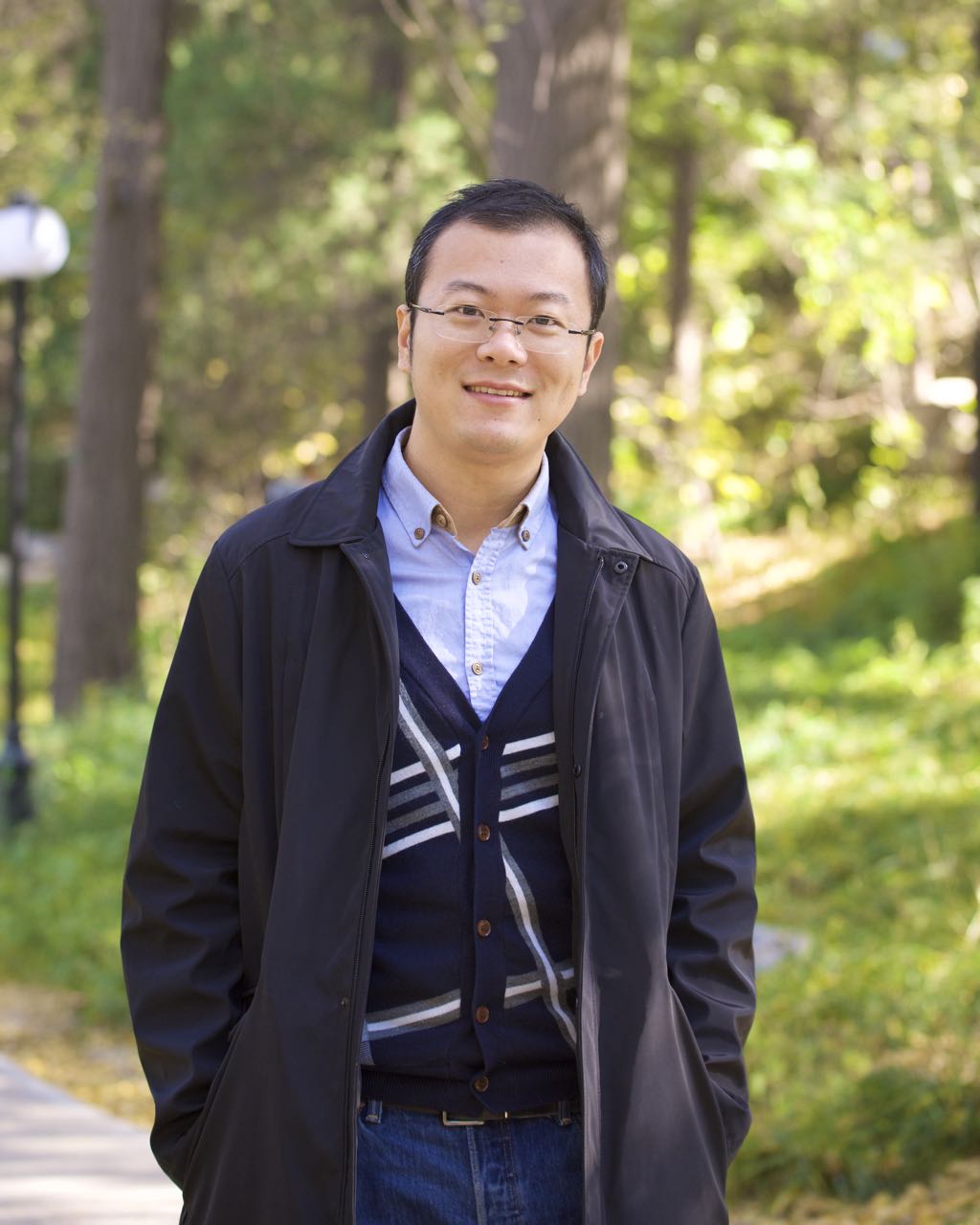
Contact Info
Office:Physics Building W567, 物理楼西567
Tel:86-10-62766891
Email:[email protected]
Personal Homepage:
Education
|
Degree |
Year |
Major |
Institution |
|
Ph.D. |
2007-2012 |
Condensed matter physics |
Fudan University |
|
B.S. |
2003-2007 |
Physics |
Fudan University |
Professional Appointments
|
Year |
Position |
Institution |
|
2012-2014 |
Postdoctoral Fellow |
Stanford University |
|
2014- |
Assistant Professor |
ICQM, School of Physics, Peking University |
Research Background
In condensed matter physics, electrons play important roles. Under the interactions through charge, lattice, orbital, and spin, electrons evolve into many novel electronic states, such as high-temperature superconductivity, spin and charge density wave, magnetic and orbital ordering et al. The understanding of these electronic states not only deepens our understanding of the many-body physics and correlated electronic system, but also creates significant impact on the applications.
With angle-resolved photoemission spectroscopy (ARPES), we try to understand various novel electronic states in condensed matter physics. ARPES is one of the most powerful techniques to study the electronic state in materials. Based on the photoelectric effect, when a beam of monochromatized radiation is shined on a sample, electrons are emitted and escape to the vacuum (Fig.1). We then use a hemisphere energy analyzer to collect these photoelectrons. Through analysis, we could obtain various properties of the electrons in the solid, including Fermi surface, band dispersion, quasi-particle lifetime, electron-electron interaction, electron-boson interaction and so on (Fig.2). The ARPES technique is still in a fast development. The participation of the degrees of spin, time, and real space et al. in the future will make ARPES play more and more important roles in the research of condensed matter physics.
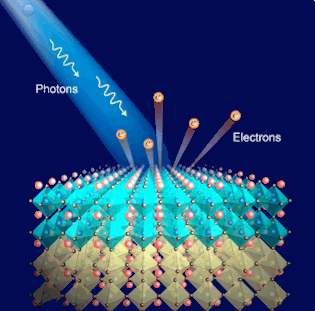 |
 |
| Fig.1:Illustration of the principle of ARPES. | Fig.2:3D plot of the ARPES spetra. |
Besides investigating the properties of electrons, we also try to design and tune the electronic states to make them practical, which is an important but also challenging issue. Typically, there are three ways to tune the electronic states. First, as to the bulk materials, we can change the temperature, pressure, carrier doping, magnetic field, and defects to tune their electronic states. Second, as to the thin films grown by Molecular Beam Epitaxy (MBE) or Pulsed Laser Deposition (PLD), we can modulate the growth conditions and substrates to tune the properties of the thin films and to obtain various non-equilibrium states. Finally, no matter for bulk materials or thin films, we can change their surface electronic states by gas absorption, ionic absorption, annealing, Electrochemical treatment and so on.
Research Interests
Novel electronic states and phase transitions:
1. High-temperature superconductivity (Cuprates and Iron-based superconductors)
2. Quantum phase transitions and quantum critical phenomenon
3. Complex strong-correlated materials (charge/spin density wave, spin/orbit ordering)
Low-dimension electronic states:
1. Topological insulator
2. Surface and interface electronic states
Selected Publications
1. Y. Zhang, Z. R. Ye, Q. Q. Ge, F. Chen, Juan Jiang, M. Xu, B. P. Xie, and D. L. Feng, “Nodal superconducting-gap structure in ferropnictide superconductor BaFe2(As0.7P0.3)2” Nature Physics 8,371-375 (2012).
2. Y. Zhang, L. X. Yang, M. Xu , Z. R. Ye, F. Chen, C. He, H. C. Xu, J.Jiang, B. P. Xie, J. J. Ying, X. F. Wang, X. H. Chen, Jiangping Hu, M. Matsunami, S. Kimura, and D. L. Feng, “Nodeless superconducting gap in AxFe2Se2 (A =K, Cs) revealed by angle-resolved photoemission spectroscopy”, Nature Materials 10, 273-277 (2011).
3. Y. Zhang, L. X. Yang, F. Chen, B. Zhou, X. F. Wang, X. H. Chen, M. Arita, K. Shimada, H. Namatame, M. Taniguchi, J. P. Hu, B. P. Xie, and D. L. Feng, “Out-of-Plane Momentum and Symmetry-Dependent Energy Gap of the Pnictide Ba0.6K0.4Fe2As2 Superconductor Revealed by Angle-Resolved Photoemission Spectroscopy”, Phys. Rev. Lett.105, 117003 (2010).
4. Y. Zhang, J.Wei, H.W. Ou, J. F. Zhao, B. Zhou, F. Chen, M. Xu, C. He, G.Wu, H. Chen, M. Arita, K. Shimada, H. Namatame, M. Taniguchi, X. H. Chen, and D. L. Feng, “Unusual Doping Dependence of the Electronic Structure and Coexistence of Spin-Density-Wave and Superconductor Phases in Single Crystalline Sr1-xKxFe2As2”, Phys. Rev. Lett.102, 127003 (2009).
5. Y. Zhang, C. He, Z. R. Ye, J. Jiang, F. Chen, M. Xu, Q. Q. Ge, B. P. Xie, J. Wei, M. Aeschlimann, X. Y. Cui, M. Shi, J. P. Hu, and D. L. Feng, “Symmetry breaking via orbital-dependent reconstruction of electronic structure in detwinned NaFeAs”, Phys. Rev. B 85, 085121 (2012). This paper has been selected as the “Editor’s suggestion”
6. Y. Zhang, B. Zhou, F. Chen, J. Wei, M. Xu, L. X. Yang, C. Fang, W. F. Tsai, G. H. Cao, Z. A.Xu, M. Arita, C.H. Hong, K. Shimada, H. Namatame, M. Taniguchi, J. P. Hu, and D. L. Feng, “The orbital characters of bands in iron-based superconductor BaFe1.85Co0.15As2”, Phys. Rev. B 83, 054510 (2011). This paper has been selected as the “Editor’s suggestion”
Open Positions
We plan to recruit 1-2 Ph. D. students each year. Postdoc position is open.
Experimental facilities:
ARPES system(in progress)
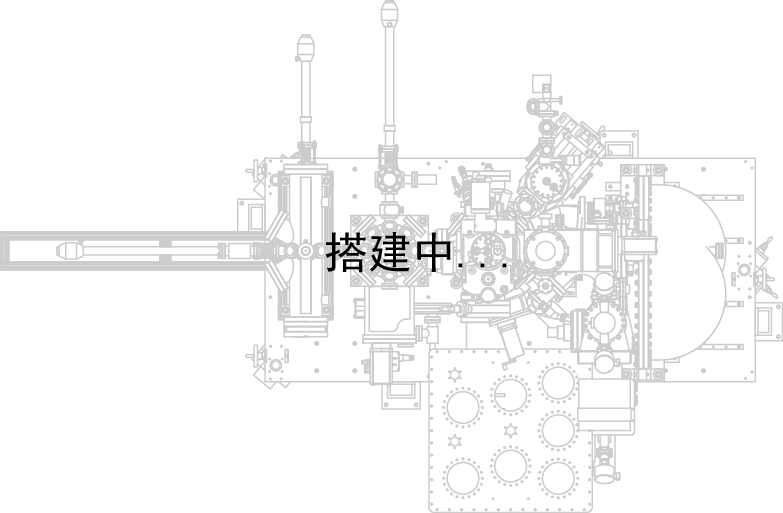
Single-crystal synthesis system
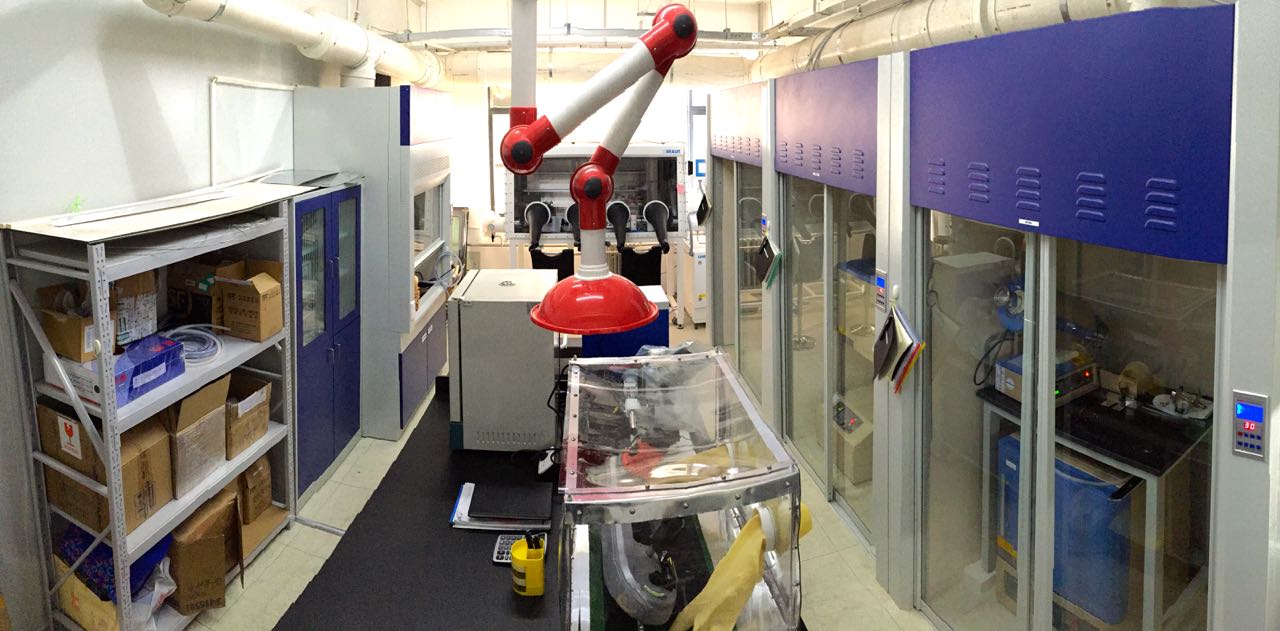
MBE system(in progress)
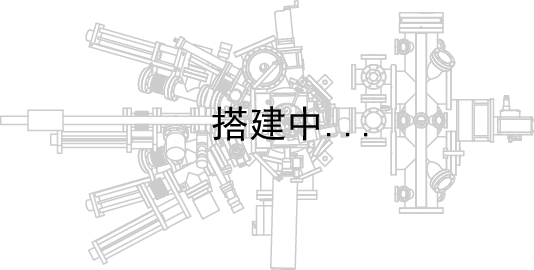
Enjoy your journey into the world of electrons.